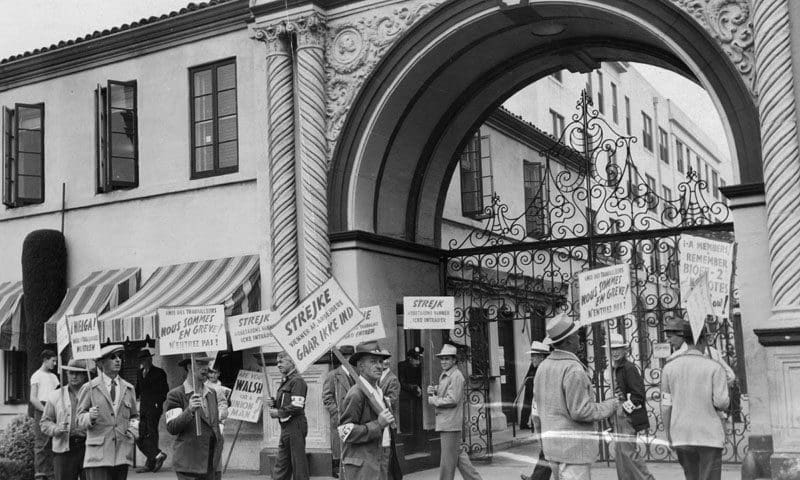
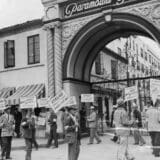
With large-scale domestic manufacturing off-shored and de-unionized, Hollywood film and television production may now be the most heavily unionized private-sector industry in the American economy. I had no idea when I started in the labor movement in the 1980s that I would get my foot in the (back) door of “the business” by working with some of the entertainment industry unions and guilds. Today’s “above the line” unions include the Directors Guild, the Writers Guild and the newly-merged SAG-AFTRA (Screen Actors Guild and American Federation of Television and Radio Artists); “below the line” unions encompass the IATSE (International Alliance of Theatrical Stage Employees – also called the “IA”), the Teamsters and others.
Though I barely knew which end of the camera to look through, I was first hired-on for some interesting projects by IA Local 600 – the Cinematographers Guild. When three regional camera locals were consolidated in the mid-1990s, I wrote and edited mail-outs to members about the merger and,
» Read more about: The Big Picture: Hollywood Unions Fight On »


We just returned from a week of glorious — and nearly free – recreation in three of California’s state parks and want to reflect for a moment on the amazing resource that our state government manages for everyone.
Despite the recent controversy about the “extra” $54 million that was discovered by the state Department of Recreation, we were reminded about the incredible natural resource that we all have in our state parks. We should also be celebrating the extra money found to keep the parks open. It’s important to remind ourselves periodically that the only thing protecting the redwood forests and gorgeous coastlines from being 100 percent privately owned recreation centers for the rich, or a special resource for the lumber industry, is our government.
We spent a week vacationing in Mendocino County, the home of redwood groves that spill down to the gorgeous rocky Northern California coastline. We were surrounded by exquisite beauty.

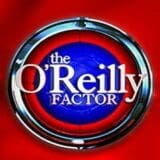
Watch the latest video at video.foxnews.comLast week, much to my surprise, Bill O’Reilly invited me on his Fox News show, The O’Reilly Factor.
He was upset that I called him a “right wing buffoon” in my Huffington Post article, “Pete Seeger – In His Own Words – Graces the Colbert Report.” The article was actually about Pete Seeger’s appearance on Stephen Colbert’s show on Monday night.
In truth, the reference to O’Reilly in my Huffington Post piece was an after-thought. I was praising Stephen Colbert for inviting Seeger on his show and I suggested that Colbert lead a campaign to get Pete nominated for the Nobel Peace Prize. I wrote that: “Colbert’s show — including his faux campaign for president, his Super PAC, and his nightly send-up of Bill O’Reilly’s right-wing buffoonery — brilliantly satirizes the absurdities of America’s corporate-dominated political culture.
» Read more about: Peter Dreier's Five-Minute Debate With Bill O'Reilly »

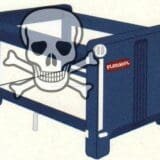
On May 12, 1998, Danny Keysar, a 16-and-one-half-months-old toddler, was strangled at his licensed childcare facility in a Chicago neighborhood. Danny was killed by a defective children’s product where he napped in the afternoons at the childcare home. The product was a mesh portable crib, or play yard — the Playskool Travel-Lite.
On August 14, 2008, Congress passed the Consumer Product Safety Improvement Act that – for the first time – directed the Consumer Product Safety Commission to set safety standards for children’s products and required they be tested to ensure compliance. Infants and toddlers are safer as the commission sets standards for cribs, bath seats, portable bed rails, infant walkers and toddler beds, high chairs, booster chairs, hook-on chairs; gates and other enclosures; stationary activity centers; infant carriers; strollers; walkers; swings; bassinets and cradles, changing tables, infant bath tubs and infant slings.


I have been wading through the three volumes of Taylor Branch’s history, America in the King Years, and reliving the dozen years between Montgomery and Memphis. The Montgomery bus boycott catapulted Martin Luther King, Jr., into the national headlines; Memphis was where he was assassinated. Throughout that tumultuous time, the Reverend James Lawson stood just offstage, a key partner in the nonviolent campaign for full citizenship for African Americans.
While King spearheaded the campaign to desegregate the buses in Montgomery, Lawson trained students in Nashville in the ways of nonviolence. He led small workshops tucked away in church basements. He taught his students not to react to taunts and threats. He gave them tools to remain calm and centered while undergoing arrest or physical attacks. Lawson believed that only by enduring the blows of hatred could haters see their own humanity. He brought Gandhi’s understanding of nonviolence to this country and he trained thousands of civil rights workers during those years.


Jose Tejeda, a member of Warehouse Workers United, talks about the “dark side of Walmart” — working 16-hour days without breaks, and at a fast pace lifting hundreds of heavy boxes every hour. When employees started to unite to improve conditions, they suddenly faced retaliation, shortened work days and less pay.
» Read more about: Walmart to Warehouse Workers: "Your Health Is Not a Concern." »

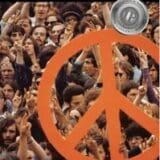
 There are epic chapters in American history that inspire a seemingly endless flow of fiction, historical analysis and first-person reflection. Not least among these chapters is the 1960s, and the dramatic social movements that helped define that decade.
There are epic chapters in American history that inspire a seemingly endless flow of fiction, historical analysis and first-person reflection. Not least among these chapters is the 1960s, and the dramatic social movements that helped define that decade.
One of the newest entrees in the ’60s canon is Gates of Eden, a novel by longtime theater artist and political activist Charles Degelman. The anti-war movement is the canvas against which Degelman sets his story, and while the book is not autobiographical, the author knows his subject well. After graduating from Harvard in 1967, Degelman left Cambridge for San Francisco and joined the San Francisco Mime Troupe, the radical theater company grounded in the work of Bertolt Brecht. The troupe performed its anti-war repertoire across the country, partnering with Students for a Democratic Society (SDS), one of the leading activist groups of the era.
Degelman,
» Read more about: Author Charles Degelman on the Legacy of the 1960s »


 You will probably never meet Norma Bravilla, and if you did you would never know that this single mother is part of the backbone of L.A.’s economy.
You will probably never meet Norma Bravilla, and if you did you would never know that this single mother is part of the backbone of L.A.’s economy.
A room attendant at downtown’s Luxe City Center, Bravilla is one of thousands of workers in the city’s largest industry, a sector that generates hundreds of millions of dollars in revenues every year. Her job is to give guests the most enjoyable experience possible by making the beds, cleaning the floors and polishing every piece of glass until it shines. If she does her job well, guests are happy and the hotel industry – as well as the local economy – benefits.
But the people who do this grueling work too often are not rewarded for it. More than 40 percent of L.A. hospitality workers are poor, unable to pay for basic necessities like rent and food.
What that means is that we are not taking care of the women and men who help take of our city and its guests.

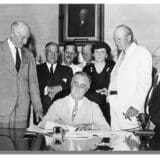
(Note: This 2010 L.A. Times op-ed appeared on the 75th anniversary of the signing of the Social Security Act. Today is that landmark legislation’s 77th birthday and, with Social Security certain to be one of the defining debate topics of this year’s presidential contest, we feel this piece is worth revisiting. Reposted with the authors’ permission.)
Alf Landon, the Kansas governor running as the Republican Party’s 1936 presidential candidate, called it a “fraud on the working man.” Silas Strawn, a former president of both the American Bar Assn. and the U.S. Chamber of Commerce, said it was part of President Franklin D. Roosevelt’s attempt to “Sovietize the country.” The American Medical Assn. denounced it as a “compulsory socialistic tax.”
What was this threat to American prosperity, freedom and democracy they were all decrying? It was Social Security, which Roosevelt signed into law on Aug.
» Read more about: Social Security Is 77 Years Old and Still a Hot-Button Topic »
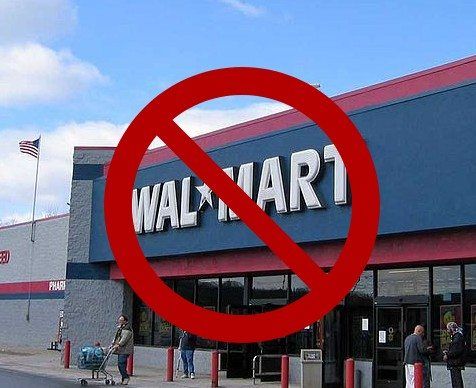
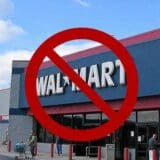
Last month Walmart pulled out of Somerville and Watertown, two cities outside of Boston, claiming it wasn’t economically feasible for the company to open markets in these areas. Here’s what Walmart spokesperson Steven Restivo told Boston.com: “One of the primary deciding factors on any given site – whether it’s in an urban, suburban or rural market – is that it makes sense from a business perspective and contributes to our bottom line.”
It’s hard to believe a company that has been around for 50 years didn’t foresee that these markets wouldn’t “make sense from a business perspective” before it announced plans to open them. Walmart knows what it takes to expand and survive, including hiring expensive lobbyists, handing out money to nonprofits and reducing its market size to avoid local planning requirements. I dug a little deeper and found that the real story is much more complicated than Walmart wants to let on.
» Read more about: Two Massachusetts Towns Say No to Walmart »